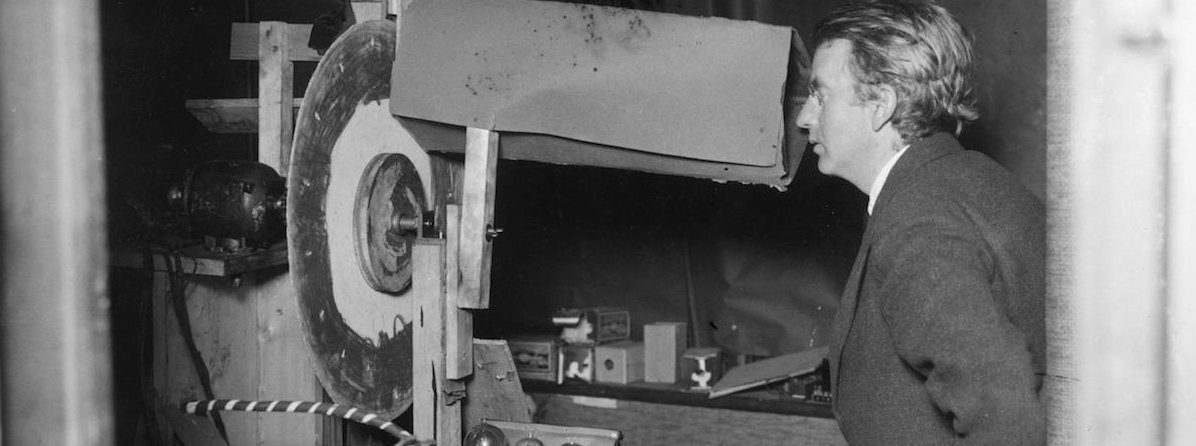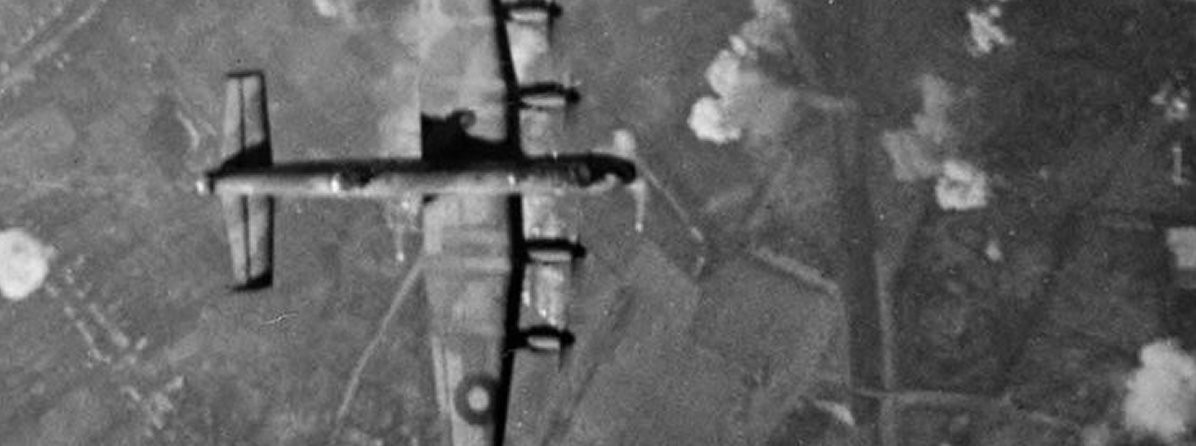
John Logie Baird - Television, Secret Experiments, Sabotage, Lies - Chapter 6
After the War
John Logie Baird never enjoyed good health, his childhood illness leaving him with weak lungs and poor circulation. But the war took an even greater toll and early on in the campaign he had suffered a mild heart attack. After a few weeks he returned to work in the difficult conditions of the London blitz but by 1945 colleagues noticed that his health was failing, and he was looking very tired. However, his prospects seemed good and he was filled with a new enthusiasm as he demonstrated Telechrome, the first colour tube to dispense entirely with mechanical devices. The Telechrome tube was spherical, with a flat mica screen in the middle. One side of the mica was coated with a fluorescent coating, and the other side with a blue-green fluorescent coating. Pictures were formed electronically on each side of the sheet, and a colour picture was visible because of the transparency of the mica.
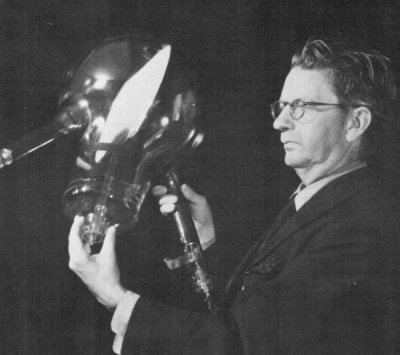
The News Chronicle reported: "By means of a new cathode-ray tube Mr Baird has caused a new medium of perfect colour to blend with his stereoscopic television. As I stood by the camera I saw my own photograph flash onto the television screen across the room. The image was in colour and as natural as any colour film I have ever seen. Mr Baird smiled at the suggestion that the Government might be induced to help him in his work and find him a laboratory in a safe area. "That would be very nice" he agreed. "But I doubt the Government would be interested enough to do such a thing." He added, "there is no doubt after the War television will become an important industry and I feel that with these two inventions we have the opportunity of going ahead with the work."
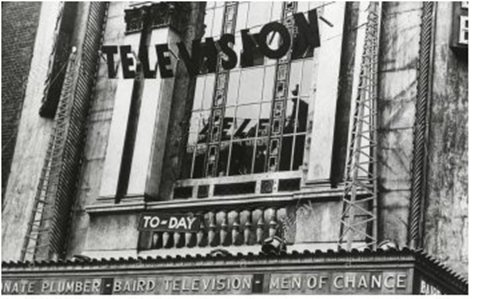
With his childhood friend, Jack Buchanan, he formed a new company with the idea of creating an independent television company broadcasting a colour TV service. Once again, he began to promote his post-war idea for television in the cinema. As plans progressed the Baird family moved to a rented house at Bexhill, on the south coast, with the idea that John would benefit from the fresh seaside air. In March 1944 he received a letter from Lord Hankey at the office of the Privy Council asking his advice on the restarting of a television service after the War. Baird suggested the service be started again as soon as possible, using the old standard of 405 lines provided that after three years a new system would render existing sets obsolete. He also put forward the idea of a free competition for the domestic market ending the BBC's monopoly and called for local services for Scotland and other regions. He also suggested relay stations be used to extend the range of transmissions. All these suggestions would eventually be taken up - but John Logie Baird would never see them.
He continued to commute to the capital until one day, in February 1946, he returned from a walk near his home looking very tired. He went to bed and during the night suffered a stroke. For a time he was bedridden and with this a depression set about him. He told his wife that if he could "hold on" for a few more years, the family's fortune would be made. There was even talk of a knighthood. As summer arrived, he went for short walks. In June he organised from his home a demonstration of his Mark 2 big screen television, sending colour televised pictures of the Victory Parade to the Classic Cinema, the News Theatre and the Savoy Hotel in London. On the night of 14th June 1946 John Logie Baird went to sleep and never woke up.
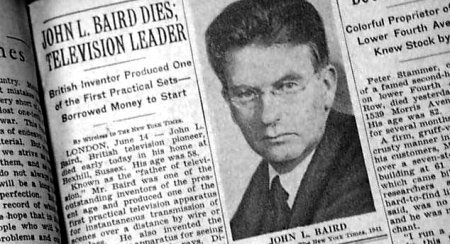
Baird left a small estate of just a few thousand pounds. The only other source of income for his widow and children was a modest pension provided by Baird Television Ltd. As the years passed, and probably as a result of the secrecy he often shrouded himself in, no mention was made of Baird's contribution to the war effort. Even those 'in the know' seemed to deliberately omit him from their own stories. Sir Robert Watson-Watt, an associate of twenty years standing must have known the truth about Baird, but in his biography, he never once mentioned him. Was Baird's work so surreptitious that years later it was still protected under the Official Secrets Act?
John Logie Baird was not only one of the century's great inventors he was also a man of great vision whose contribution to the technology we now take for granted has been understated and underestimated for far too long. The evidence presented here may go a long way to removing any doubt of Baird's achievements, but ultimately it is up to the reader to decide if there is enough of it to support many of the theories put forward. Baird invented television, experimented with Phonovision -a forerunner of the videodisc (DVD), infrared detection systems, radar, fax machines, colour and large screen televisions-sometimes decades before they came into common everyday usage. These are the achievements we know about. What of the others that even today the Ministry of Defence feel are still too sensitive to talk about?
Laurence Marcus June/July 2021. Reference Sources: See first paragraph chapter one.
